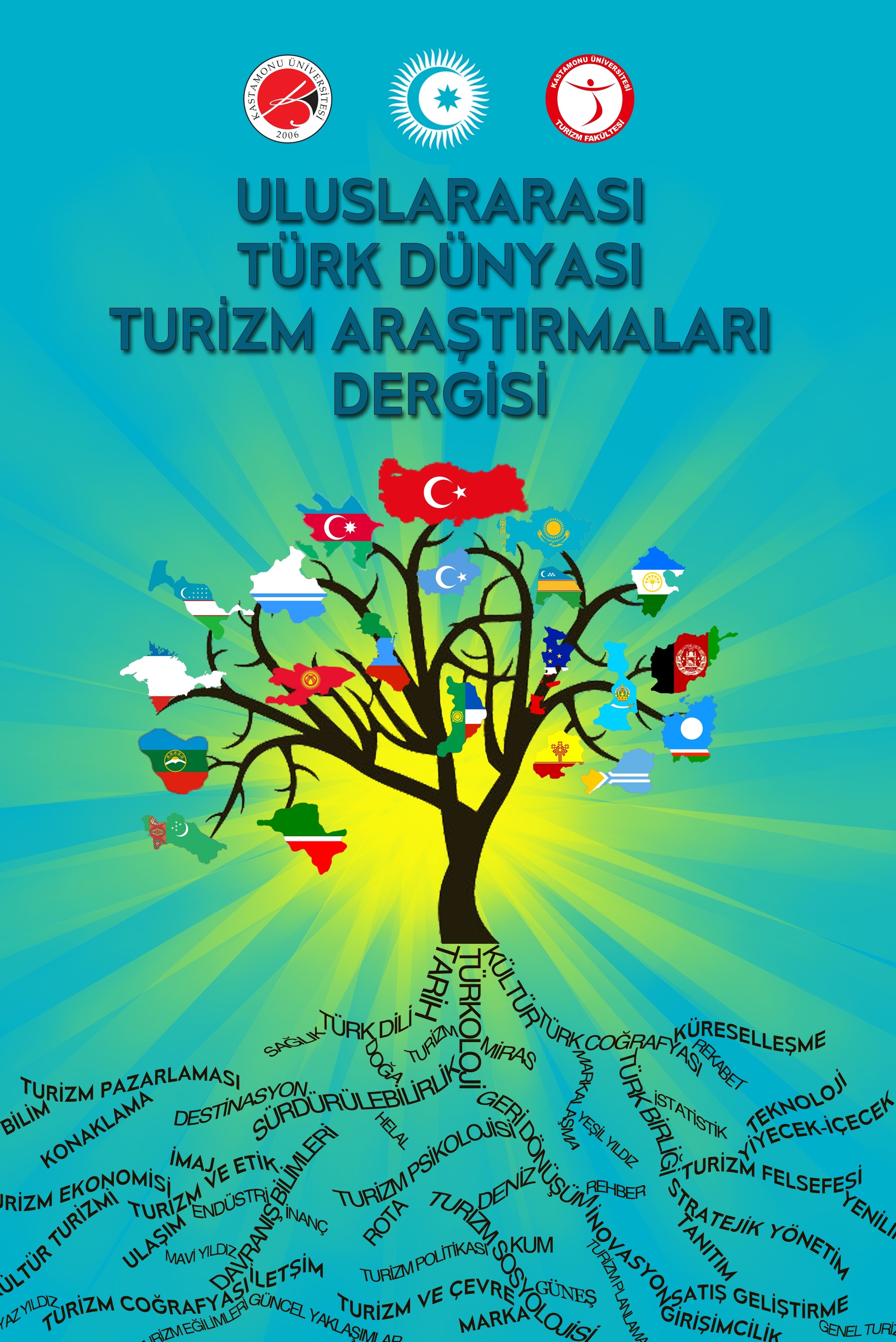Türkiye’nin Müslüman Dostu Turizm Pazarı Potansiyelinin Sayısallaştırılmış Swot Analizi (A’wot) İle Değerlendirilmesi
Son yirmi yılda Müslüman turistlerin profili ve davranışları değişmiştir. Bu turist grubu artan bir şekilde kendilerine özgü gereksinimleri dikkate alan, hizmet kalitesi yüksek olan destinasyonları tercih etmektedirler. Ayrıca Müslüman turistler kendileri için güvenli olan destinasyonları öncelikli olarak tercih etmektedirler. Malezya, Dubai ve Türkiye gibi birkaç destinasyon Müslüman turistlere onların gereksinimlerine hitap eden konaklama şekli, tesisler ve hizmetler sunarak değişen bu trendden faydalanmayı bilmişlerdir. Bununla birlikte Türkiye’nin Müslüman Dostu Turizm pazarına yönelik çabalarında başarabildikleri ve başaramadıkları vardır. Bu çalışmanın temel amacı, Türkiye’nin bir İslami Turizm Merkezi olabilme çabalarına ilişkin başarabildikleri ve başaramadıklarını özetlemektir. Bu kapsamda Türkiye’nin Müslüman Dostu Turizm kapsamında güçlü ve zayıf yönleri ile üstünlükleri ve zayıflıkları çeşitli uluslararası endekslerden ve Müslüman Dostu Turizm literatüründen faydalanılarak oluşturulmuştur. Çalışmanın diğer bir amacı da SWOT faktörlerinin öncelik ve önem sırasını belirlemektir. Bu amaçla SWOT faktörlerine ilişkin Sayısal SWOT (A’WOT) hesaplamaları yapılmıştır. Buna göre, yapılan hesaplamalar neticesinde, üstünlüklerin, diğer SWOT gruplarına göre daha öncelikli (ağırlık 0,44) olduğu saptanmıştır. Bu grubu, sırasıyla zayıflıklar (0,28), tehditler (0,19), fırsatlar (0,09) izlemektedir.
Anahtar Kelimeler:
Müslüman Dostu Turizm, SWOT, AHP, A'WOT
Muslim Friendly Tourism Market Potential of Turkey, Evaluated Through The Digitised Swot (A’wot) Analysis
In the past two decades, the behaviours and profile of Muslim tourists have changed. Destinations with high service quality that cater to their specific requirements are increasingly preferred by this group of tourists. Furthermore, Muslim tourists prioritise destinations that are safe for them. Malesia, Dubai, Turkey and other few destinations have managed to benefit from this trend by providing accommodation, facilities, and services that respond to Muslim tourists’ requirements. However, the attempts of Turkey towards the Muslim Friendly Tourism market has their successes and failures. This study’s primary aim is to outline these success and failures about Turkey’s strive for becoming an Islamic Tourism Centre. In such context, strengths and weaknesses of Turkey in terms of Muslim Friendly Tourism have been acquired from various international indexes and literature on the topic. Another object of this study is to determine the priority and order of importance of the factors of SWOT. For this purpose, Digitised SWOT (A’WOT) calculations upon the SWOT factors have been performed. According to the calculations, superiorities have been determined to have priority over other SWOT groups (weight 0,44). This is respectively followed by weaknesses (0,28), threats (0,19), opportunities (0,09).
Keywords:
Muslim Friendly Tourism, SWOT, AHP, A'WOT,
___
- AeJeon, Y., & Kim, J. (2011). An Application of SWOT-AHP to Develop a Strategic Planning for a Tourist Destination. 16. Graduate Students Research Conference. Houston,Texas.
- Bon, M., & Hussain, M. (2010). Tourism in the Muslim World. N.Scott içinde, Bridging Tourism Thery and Practice (s. 47-59).
- COMCEC. (2016). COMCEC Tourism Outlook 2016. Standing Committee for Economic and Commercial Cooperation of the Organization of Islamic Cooperation.
- Dinarstandard, & ThomsonReuter. (2016). STATE OF THE GLOBAL ISLAMIC ECONOMY 2016/17. Thomson Reuters Zawya.
- Fattahi, S. S., & Khaleghjoo, H. (2014). The Identification of Organizational Success Strategies by Analytical Hierarchy Process (AHP), Case Study: Hotel Industry. Journal of Applied Environmental and Biological Sciences, 225-233.
- Forman, E. H., & Peniwati, K. (1998). Aggregating Individual Judgments and Priorities with the Analytic Hierarchy Process. European Journal of Operational Research, 150-169.
- Giriner, N., & Çevdar, Z. (2007). En uygun Fiyatlandırma Stratejisinin Grup Karar Vermeli Analitik Hiyerarşi Süreci ile Değerlendirilmesi: Türkiye Otomotiv Sektörü için bir Uygulama. İktisat İşletme ve Finans İnceleme-Araştırma Dergisi, 101-127.
- GlobalIslamicEconomyGateway. (2016).
- IEP. (2016). Global Peace Index. Institute For Economics and Peace.
- IEP. (2016). Global Terrorism Index. Institute Economics and Peace.
- Jeuring, J., & Haartsen, T. (2016). The Challenge of Proximity: the (un) Attractiveness of Near-Home Tourism Destinations. Tourism Geographies,19:1, 118-141.
- Kajanus, M., Kansas, J., & Kurttıla, M. (2004). The Use of Value Focused Thinking and The A'WOT Hybrid Method in Tourism Management. Tourism Management, 499-506.
- Karagöz, M. (2015). İstatistik Yöntemleri. İstanbul: Ekin Yayınevi.
- Kurtıla, M., Pesonen, M., Kangas, j., & Kajanus, M. (2000). Utilizing the Analytic Hierarchy Process (AHP) in SWOT Analysis-A Hybrid Method and Its Application to A Forest-Certification Case. Forest Policy and Economics, 41-52.
- MasterCard-CrescentRating. (2016). MasterCard-CrescentRating Global Muslim Travel Index 2016. Singapore: MasterCard-CrescentRating.
- Mohsin, A., Ramli, N., & Alkhulayfi, B. A. (2016). Halal Tourism: Emerging Opportunities. Tourism Management Perspectives 19, 137-143.
- Ömürbek, N., & Tunca, M. Z. (2013). Analitik Hiyerarşi Süreci ve Analitik Ağ Süreci Yöntemlerinde Grup Kararı Verilmesi Aşamasına İlişkin Bir Ulgulama. SDÜ İİBF Dergisi, 47-70.
- PewResearch. (2014). Pew Research Centre Religion&Public Life. Retrieved foram Pew Research Centre. Wasington.USA: www.Pewforum.org.
- Saaty, T. L. (1980). The Analytic Hierarchy Process: Planning, Priority Setting, Resource Allocation. McGraw-Hill.
- Shinno, H., Yoshioka, H., Marpaung, S., & Hachiga, S. (2006). Quantitative SWOT Analysis on Global Competitiveness of Machine Tools Industry. Journal of Engineering Design, 251-258.
- Stacey, R. (1993). Strategic Management and Organisational Dynamics. London: Pitman.
- TDV. (1988). Diyanet İslam Ansikhopedisi. http://www.diyanetislamansiklopedisi.com/.
- WEF. (2015). The Travel and Tourism Competitiveness Report. Geneva: World Economic Forum.
- ISSN: 2587-1080
- Başlangıç: 2015
- Yayıncı: Kastamonu Üniversitesi
Sayıdaki Diğer Makaleler
Bir Alternatif Turizm Çeşidi Olarak “Tefekkür Turizmi” Üzerine Kavramsal Bir Çalışma
Azerbaycan'da İç Turizmin Yerel Turistler Tarafından Değerlendirilmesi
Helal Konseptli Otellerde Tutundurma Stratejilerine Yönelik Bir Değerlendirme
Azerbaycan’da Türkiye’nin Turistik Tanıtım ve Propaganda Faaliyetleri Üzerine Bir Değerlendirme
İslami Bakış Açısıyla Helal Turizm
Füsun İSTANBULLU DİNÇER, Gül ERKOL BAYRAM
Gıda ve Turizm Sektöründe Böceklere Yer Var mı?
Eda GÜNEŞ, Ümit SORMAZ, H. Ferhan NİZAMLIOĞLU
Azerbaycan ve Türkiye Mutfak Kültürünün Tarihi Birlikteliği ve Mevcut Durumunun Belirlenmesi
